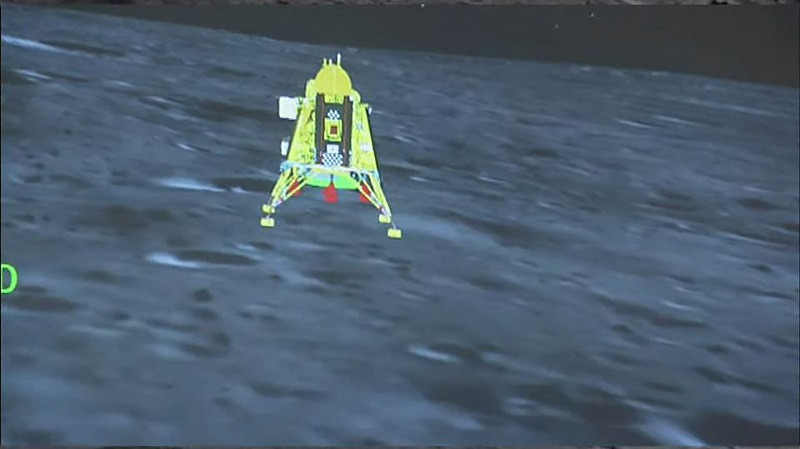
The race for lunar exploration supremacy between India and China has reached new heights, as India's Chandrayaan-3 rover recently made a historic landing near the lunar South Pole. This achievement, however, has ignited a debate between the two space giants, with a top Chinese scientist questioning the significance of India's accomplishment.
Ouyang Ziyuan, often regarded as the pioneer of China's lunar exploration programme, has expressed scepticism speaking to the Chinese-language Science Times newspaper regarding the claims surrounding Chandrayaan-3's landing, Taipei Times reported.
He argues that the Indian rover's landing site, situated at 69 degrees south latitude, falls considerably short of the lunar South Pole, which is defined as being between 88.5 and 90 degrees. In essence, he contends that India's achievement, while remarkable, does not truly qualify as a polar landing.
Comparing the lunar coordinates to their Earthly counterparts, it becomes apparent that 69 degrees south on the Moon is not analogous to the Antarctic circle on our planet, which is much farther from the South Pole.
Ouyang Ziyuan asserts, "It's wrong. The landing site of Chandrayaan-3 is not at the lunar South Pole, not in the lunar South Pole region, nor is it near the lunar South Pole region." He further emphasises that Chandrayaan-3 was approximately 619 kilometres distant from the polar region.
Read also: No signal from lander, rover after lunar sunrise, says India
As of now, India's space agency has not responded to these comments, leaving the controversy simmering in the background.
In the aftermath of Chandrayaan-3's landing, the Chinese Communist Party's Global Times cited Pang Zhihao, a prominent space expert based in Beijing, lauding China's technological prowess in the field of lunar exploration.
China’s space programme “has been capable of sending orbiters and landers directly into Earth-Moon transfer orbit since the launch of Chang’e-2 in 2010, a manoeuvre that India has yet to deliver given the limited capacity of its launch vehicles,” he was quoted by the newspaper as saying. “The engine that China used is also far more advanced,” he added.
However, it's worth noting that Chandrayaan-3's landing did set a remarkable precedent by venturing significantly farther south on the Moon than any previous spacecraft.
Russia's recent attempt to land near the lunar south pole ended in failure when their spacecraft crashed into the lunar surface. China's Chang'e 4, the first to land on the far side of the moon, touched down at 45 degrees south in 2019, whereas NASA's uncrewed probe, Surveyor 7, achieved a landing at about 41 degrees south in 1968.
1732013245-0/now-you-see-me-(1)1732013245-0-405x300.webp)
1730959638-0/trump-(19)1730959638-0-165x106.webp)




1731996868-0/Untitled-design-(7)1731996868-0-270x192.webp)




1693422707-0/02-(1)1693422707-0-270x192.webp)








COMMENTS
Comments are moderated and generally will be posted if they are on-topic and not abusive.
For more information, please see our Comments FAQ